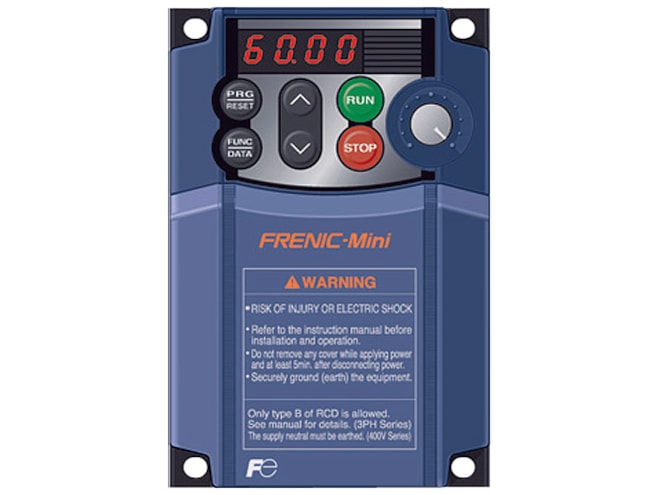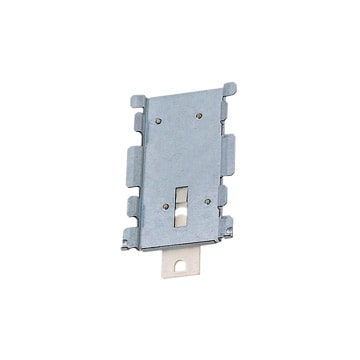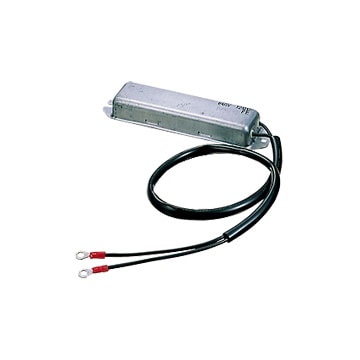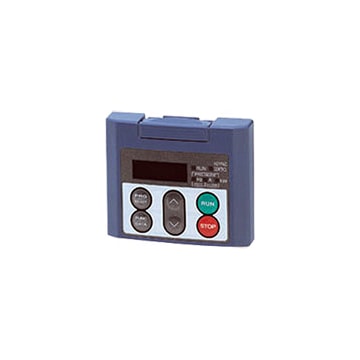
Fuji Electric FRENIC-Mini Inverter
Provides outstanding performance for both single-phase and three-phase applications from 1/8 to 5 hp.

Overview
Features
- Flexible design to meet various needs
- Simple operation
- New, compact design allows for side-by-side mounting
- Optional RS485 communications card can be installed internally
- Compatible with a wide range of frequency settings
- Front panel display and keypad for programming and viewing data
- A transistor output is provided for overload early warning, lifetime forecast or other information signals to be output during operation
- The output frequency can be set to a maximum of 400Hz
- Two points can be set for a non-linear V/f pattern
- Includes long-life cooling fan
- The alarm history for the 4 latest alarms is recorded
- An inrush current suppression circuit is provided as standard
- A DC reactor (DCR) connection terminal is provided as standard
- Sink/Source can be switched by means of an internal jumper switch
- The motor can be protected by a PTC thermistor
Description
The Fuji Electric FRENIC-Mini Inverter provides outstanding performance for both single-phase and three-phase applications. Available in multiple configurations to support 1/8 HP up to 5 HP AC drives, variable frequency drives (VFD) and v/ Hz vector drives, the FRENIC-Mini is a compact unit that combines simple operation with industry-leading performance.
As conveyors and similar equipment become more powerful and as users demand increased energy savings from fans, pumps, etc., the need has developed for compact, economical, general-purpose inverters with higher performance and diverse functions. The Fuji Electric FRENIC-Mini— with its consideration of peripheral devices, protective functions, and conformity to international standards— was born to meet this need.
The FRENIC-Mini features a full range of functions to meet the needs for higher performance in machines and equipment such as conveyors, fans, pumps, centrifugal separators and food processing machines, as well as the needs for system integration, energy saving, labor saving, and total cost reduction.
Documents
Accessories
Need Help? Call a Temperature engineer at 1-800-884-4967
We're open 8:00 am to 5:00 pm ET










